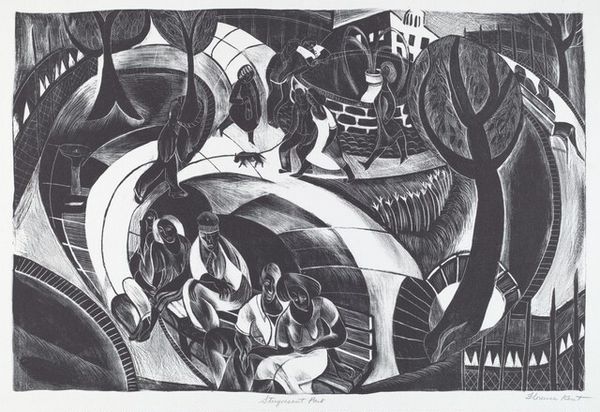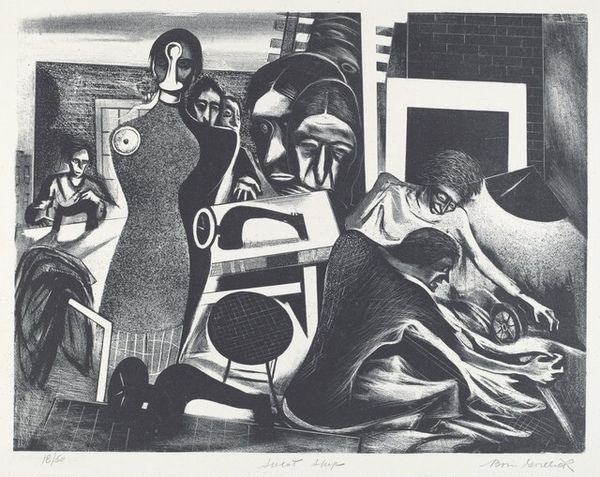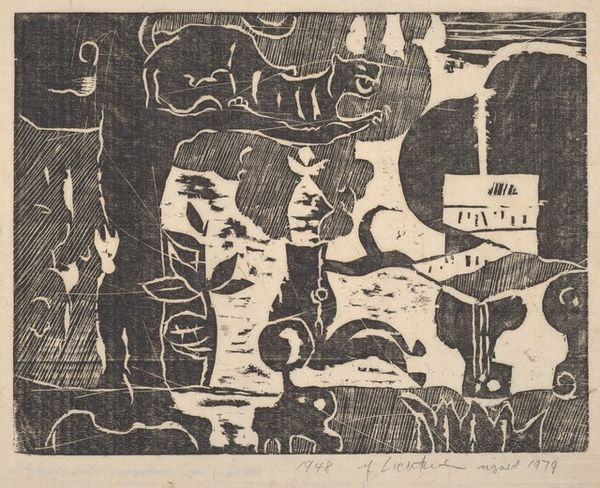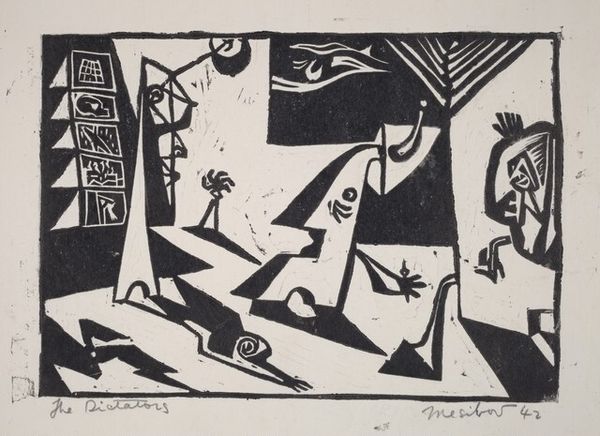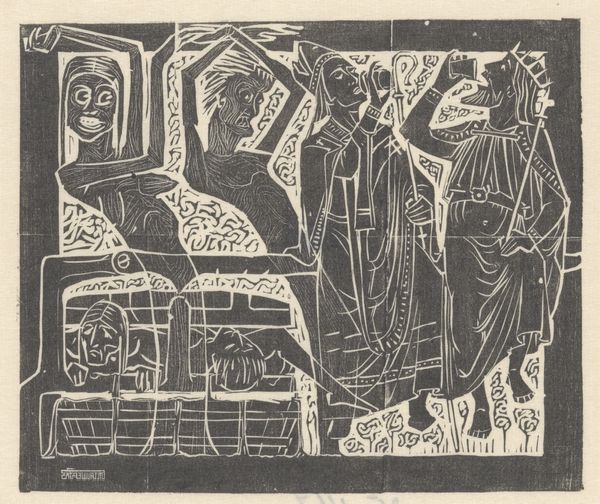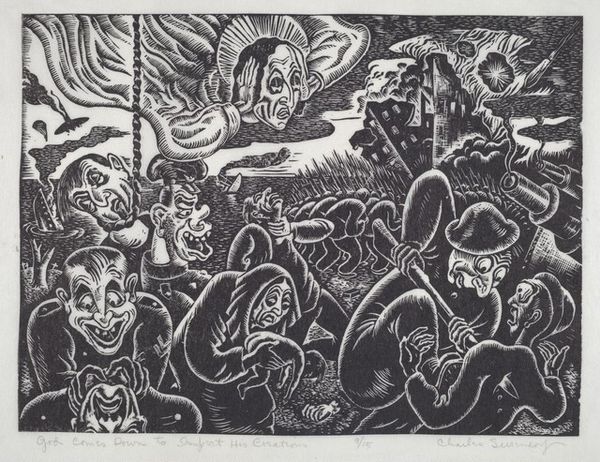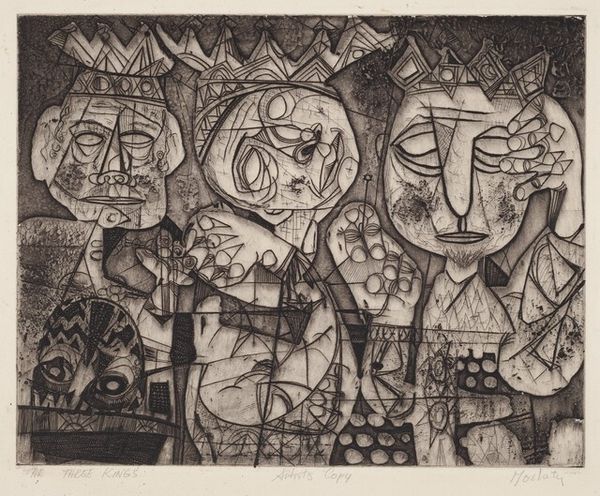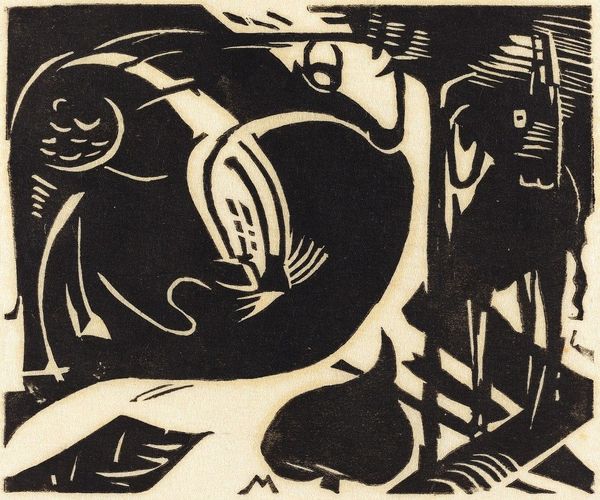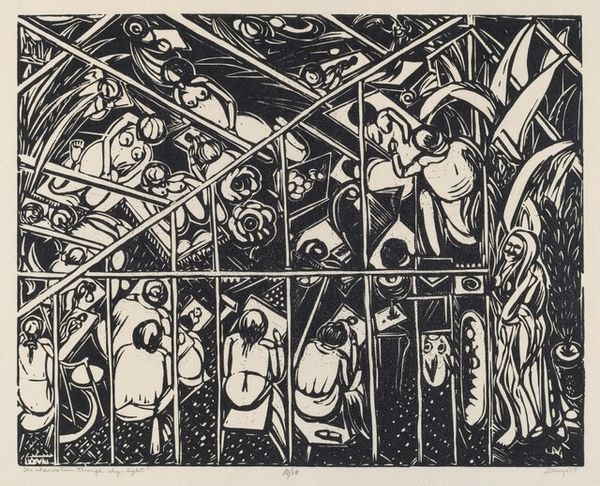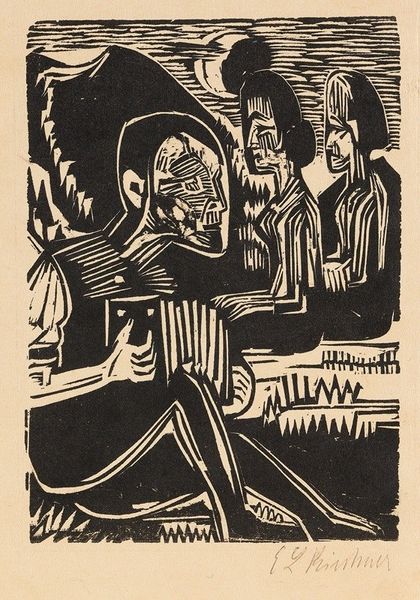
Dimensions: image: 305 x 460 mm sheet: 380 x 515 mm
Copyright: National Gallery of Art: CC0 1.0
Curator: This etching by Reuben Kadish, simply titled "Untitled (Chains)," was created around 1939, a turbulent time on the world stage. Editor: It strikes me immediately as unsettling. There's a sense of confinement, not just from the figures that appear to be trapped or bound, but also from the dense layering and stark contrasts of black and white. Curator: Indeed. Kadish uses those chains not just as literal restraints, but also as powerful symbols. Think about what chains represent: oppression, enslavement, a lack of freedom – things that resonated deeply during the rise of totalitarian regimes in the pre-war years. The recurring figures are also telling – those spectral bodies seem trapped between dimensions of existence. Editor: Looking at the work through the lens of materiality, the graphic quality is achieved via laborious process of etching. The way the plate bites create these contrasting textures is significant – almost as if the materiality reinforces the violent imagery and dark psychology present here. There's a weight, a literal pressing-down felt throughout. And how was that labor organized? Curator: That’s interesting, isn’t it? The dense line work, the heavy shading... these build to an atmosphere of dread. But the images themselves contain older, more universal references too – figures reminiscent of those in mythological art, and a suggestion that such power can also be internal, self-imposed. There's a complex interplay between individual and collective experience, of both psychological states and real political contexts. Editor: Perhaps that duality explains its enduring resonance. The tension between freedom and control plays out across many social registers even today. It seems a very intentional aesthetic and political project made concrete through its production, too. The chain imagery becomes that of process in tandem to the aesthetic project here – something that can and is physically worked. Curator: Agreed. Its lasting impact, for me, resides in the powerful distillation of a period rife with global uncertainty, fear, and hope. Editor: For me, it brings me back to the production of such pieces during fraught political moments - how and by whom that material translation took place is what makes this artwork continue to stay with me.
Comments
No comments
Be the first to comment and join the conversation on the ultimate creative platform.
